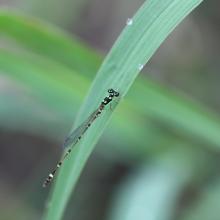

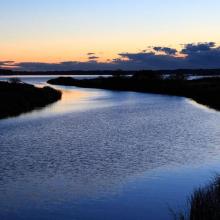
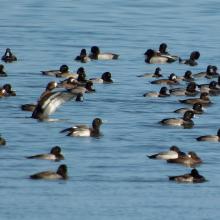

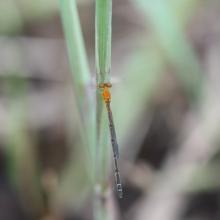
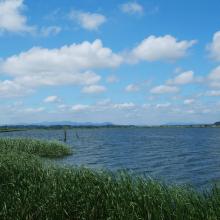
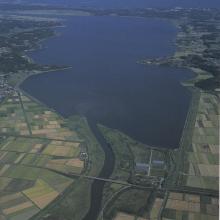

Hinuma
- Country:Japan
- Site number:2232
- Area:935 ha
- Designation date:28-05-2015
- Coordinates:36°16'N 140°30'E
Materials presented on this website, particularly maps and territorial information, are as-is and as-available based on available data and do not imply the expression of any opinion whatsoever on the part of the Secretariat of the Ramsar Convention concerning the legal status of any country, territory, city or area, or of its authorities, or concerning the delimitation of its frontiers or boundaries.
Overview
About 6,000 years ago a rise in sea level on the east coast of Honshu Island formed a cove, and subsequently the narrowing of the cove’s entrance with sand from rivers made it into a brackish lake, namely Hinuma. The seawater flows ten kilometres upstream to Hinuma through Naka River and Hinuma River at high tide, and blends with freshwater. Hinuma provides habitats for many species, including nationally endangered species such as the four-spot midget damselfly (Mortonagrion hirosei) and Steller’s sea eagle (Haliaeetus pelagicus) during important stages of their lives. More than 88 species of birds are observed at Hinuma. In winter, more than 10,000 ducks such as mallard (Anas platyrhynchos) and greater scaup (Aythya marila) migrate to Hinuma to feed and roost. The number of greater scaup wintering at Hinuma is estimated at around 5,000 individuals annually and accounts for more than 1% of its population in East Asia. Hinuma has also long been a fishing site for brackish fishes and clams such as Asian clams, gobies and pond smelts.
Administrative region:
Ibaraki Town, Oarai Town and Hokota City, Ibaraki Prefecture, Kanto region
- National legal designation:
- Special Protection Area of National Wildlife Protection Area - Hinuma Special Protection Area within Hinuma National Wildlife Protection Area
- Last publication date:12-08-2015
